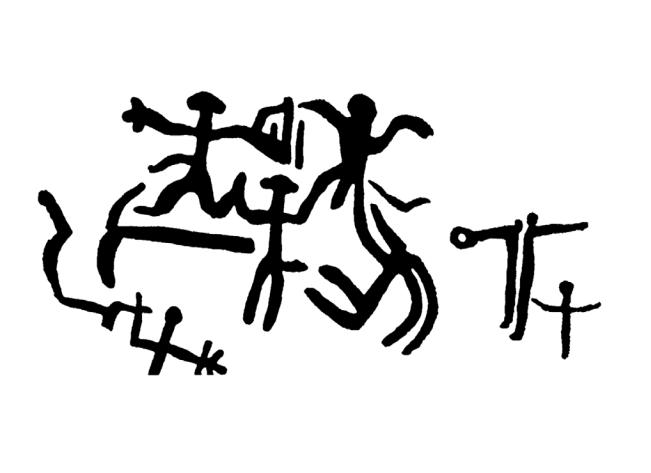
Հնչյուն և լռություն
.pdf
|
|
|
|
|
( , |
|
) |
|
|
|
, |
|
|
|
|
|
, |
, |
|
|
|
|
|
, |
, , |
|
|
|
, |
|
: |
, , |
|
|
|
|
|
|
|
|
, , |
|
, |
« » |
, |
, |
|
|
|
|
|
170
SOUND AND SILENCE
The Musician and Musical Instruments Throughout the Centuries
Music is the art of combining sound and silence through time. Much like the other branches of modern art, music has traveled a long way over thousands of years. The art of music is considered the most noble and divine characteristic which differentiates man from the animal.
Since ancient times, man has used onomatopoeia and exclamations to imitate natural phenomena, objects, and living beings surrounding him. By echoing those sounds, man has discovered his own vocal abilities and has expressed his emotions and moods. In this manner, man has entered in a dialogue with nature and himself.
Original performances combining voice, sounds, movements, and musical instruments accompanied ancient ritual ceremonies. These methods of expression also became the initial system of communication used to transmit simple thoughts and feelings. This accrete protolanguage contained elements of both music and speech which worked together to form a homogeneous whole.
Along with the vocal practice, or at times independent from it, primitive man experimented with his body and used it as a natural instrument (e.g. claps, stomping
etc.). Then, man used natural raw materials and simple tools from his everyday life, such as stone, bone, and wood, in order to make his communication system more expressive and diverse and seek new modes of expression to reduce time and space. As humans developed, they also improved these original musical instruments and their groups; they became the prototypes of modern instruments, their families.
This exhibition will give visitors the opportunity to get acquainted with the historical development of instrumental music culture in the Armenian Highland through the musical instruments themselves. Music, which is born from the master instrument-maker, rises from the instruments and is given sound by the musician - music which we can contemplate by listening to in silence and feeling its charming sounds.
Nairi Khatchadourian
Curator
171

ExcavatedMusic
Thefollowing exhibits were not on display during the exhibition: 1.2, 1.3, 1.6, 1.9, 1.11, 1.12

, , , , , , ,
,, . . II-I , ,
During ancient times, man’s ritual celebrations were accompanied by singing, as well as with playing simply structured musical instruments made with natural materials. Instrumental music was performed solo or with an ensemble during spiritual and secular ceremonies, celebrations, banquets, epic narrations, theatrical performances, hunting, military marches, and funeral rites.
The oldest instruments excavated in the Armenian Highland are the idiophones belonging to the percussion family: bronze rattles, bells, and cymbals, which were common in II-I millennia B.C. These early idiophones were related to folk beliefs; they were used to drive away evil forces. Among the wind instruments discovered from excavations are the hornpipe, bone and stone flutes consisting of one or multiple pipes, which hold an honorable place among the ancient civilizations of the world. They were considered sacred instruments and were played during ceremonies associated with the fertility cult. Instruments like the lyre and other string instruments, both also excavated in the Armenian Highland, are well-known pieces of iconography as objects of decorative and applied art.
173

1.1
, . . III-II .
1.1 Lyre Player
Ritual dance scene
Gegham mountain rock-carving, 3rd-2nd millennia B.C.
174

1.2
, . . II-I .
. 6,5 , . 1,8 , . 0,6 , 1,3, . MNB 398
1.2 Flute Player
Sevan Lake region, border of the 2nd-1st millennia B.C. Cast bronze
Height 6.5 cm, base width 1.8 cm, thickness of body 0.6 cm, head profile 1.3 cm Louvre Museum, inv. MNB 398
175

1.3
, . . XXII-XXI . 13,2 x 10,6 x 5,5
N 2867-1
1.3 Cup
Karashamb, 22nd-21st centuries B.C. Silver 13.2 x 10.6 x 5.5 cm
History Museum of Armenia N 2867-1
176

177

1.4 - |
1.5 |
. . II . |
( ), |
|
. . II . |
. 4,2 , . 5,3 |
|
|
. 4,3 , . 4,5 |
1230/39 105 |
|
1230/39 104 |
1230/39 93 |
|
1230/39 92 |
1.4 Bird Statuette-Pendant |
|
2nd half of 2nd millennium B.C. Cast bronze
Height 4.2 cm, length 5.3 cm
National Museum of Armenian Ethnography1230/39 1051230/39 104
1.5 Rattles
Kirovakan (Vanadzor),
2nd half of 2nd millennium B.C. Cast bronze
Height 4.3 cm, height 4.5 cm
National Museum of Armenian Ethnography1230/39 931230/39 92
178

1.6
, . . VII .. 17,5
N 201026
1.6 Cymbal
Karmir Blur, 7th century B.C. Copper Diameter 17.5 cm
History Museum of Armenia N 201026
179
